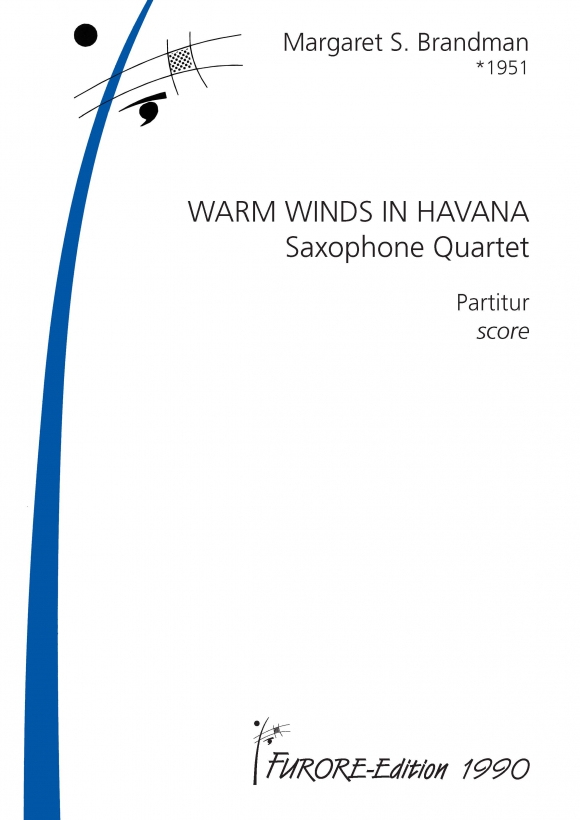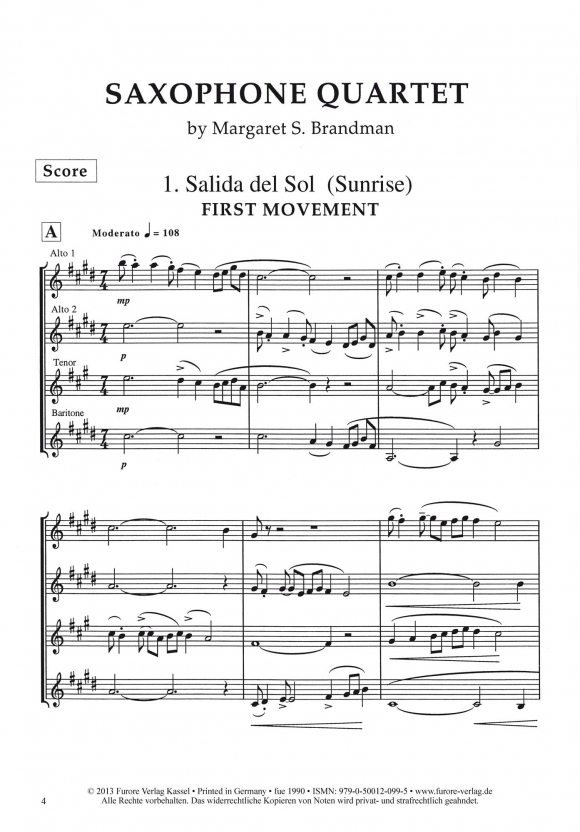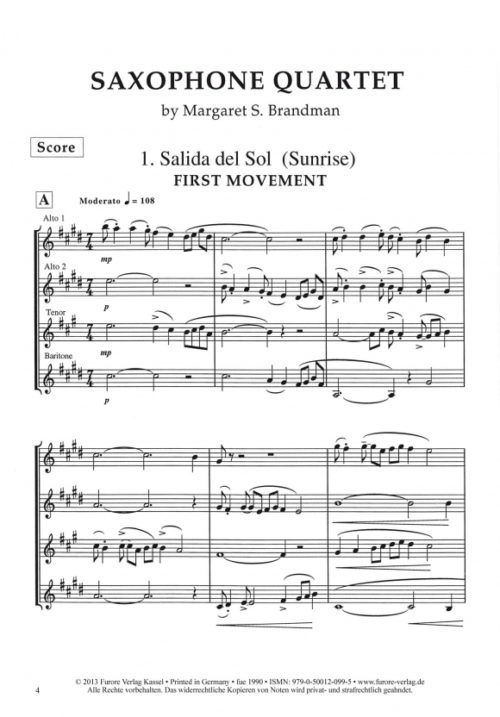Description
Instrumentation: saxophone quartet
Edition: score and parts
Year: 1976
Difficulty: medium
A modern work combining Jazz, contemporary and contrapunctal effects, including the use of Odd-Times and Swing Jazz.
WARM WINDS IN HAVANA
1) Salida del Sol (Sunrise)
2) Danza del Día (Dance of the Day)
3) Ritmo de la Noche ( Rhythm of the Night)
This lively rhythmic work is a musical representation of the sounds and moods on a warm day in Havana.
It was originally commissioned by the Sydney Saxophone Quartet, and has received airplay on Australian National radio.
The work explores many varied time signatures (7, 5, 4 and 3 beats per measure), contrapuntal techniques and syncopated rhythmic effects as well as introducing strong melodic themes.
Selected international performances include the performance by Donne in Sax the Donne in Musica festival in Italy in 1997, by the Brandmanburg Saxophone Quartet at the Australian Rhapsodies to Rhumbas Concerts in 2013 and 2014 and the Javier Zalba Saxophone Quartet in Havana, Cuba 2016. In 2015 Margaret Brandman attended the recording of the composition in Havana by the Javier Zalba Saxophone Quartet, for Parma Recordings USA. The composition is included on the compilation album Abrazo on the ‘Ansonica Records’ label.
Programme Note
1) Salida del Sol (Sunrise)
The motif of this moderately paced and gentle work is a descending syncopated theme in 7/4 time which is shared around between the instruments creating warm colours. Once this theme has been fully explored, the music then floats into the contrasting theme in the style of a jazz waltz.
2) Danza del Día (Dance of the Day)
In contrast to the previous movement this brisk work begins in quadruple time enlivened by syncopated chordal effects. The second theme is in triple time featuring flowing melodic lines treated in a contrapuntal manner. The mysterious sparse rhythmic figure in the contrasting middle section forms a platform over which the soprano and alto saxophones enter into a conversation followed by a short coda employing both the homophonic chordal rhythm and the melodic themes from earlier in the piece.
3) Ritmo de la Noche (Rhythm of the Night)
In this final movement repeated sixteenth notes occurring in layers between the instruments create a shimmering effect which leads into a bouncy answering figure. The rhythmic effect is then contrasted with expressive soaring melodic lines. In the development section of the piece, both ideas are combined as the flowing melody line is underpinned with the rhythmic motif established in the opening bars of the composition.
Buy separate performance material here:














